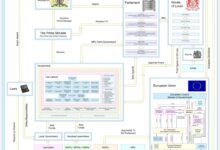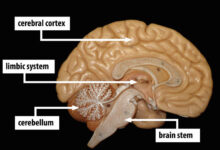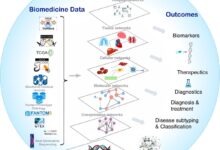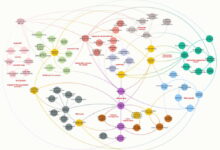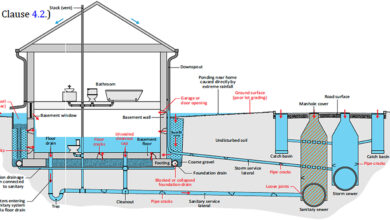System Architecture: 7 Powerful Insights You Must Know
Ever wondered how complex software systems stay organized, scalable, and efficient? The secret lies in system architecture — the master blueprint that shapes how components interact, data flows, and services scale. Let’s dive into what makes it so powerful.
What Is System Architecture? A Foundational Understanding

At its core, system architecture is the high-level structure of a software or IT system. It defines how different components — such as databases, servers, APIs, and user interfaces — are organized and how they communicate. Think of it as the architectural plan of a skyscraper: without it, you can’t build something stable, scalable, or safe.
The Definition and Scope of System Architecture
System architecture encompasses both hardware and software elements. It’s not just about code; it includes network layouts, deployment environments, data storage strategies, and even security protocols. According to the ISO/IEC/IEEE 42010 standard, architecture is the fundamental concepts or properties of a system in its environment embodied in its elements, relationships, and principles of design and evolution.
- It defines the system’s components and their responsibilities.
- It outlines communication protocols between modules.
- It sets constraints and guidelines for development teams.
Why System Architecture Matters in Modern Development
In today’s fast-paced digital world, where applications must scale globally and adapt quickly, a solid system architecture is non-negotiable. Poorly designed systems lead to technical debt, performance bottlenecks, and security vulnerabilities. A well-thought-out architecture, on the other hand, enables agility, resilience, and long-term maintainability.
“Good architecture isn’t about complexity — it’s about clarity, simplicity, and foresight.” — Martin Fowler, Chief Scientist at ThoughtWorks
Key Components of System Architecture
Every robust system architecture is built on several foundational components. These elements work together to ensure the system functions efficiently, scales appropriately, and remains secure over time.
Hardware and Infrastructure Layer
This layer includes physical or virtual servers, storage devices, networking equipment, and cloud platforms. Whether you’re using AWS, Google Cloud, or on-premise data centers, the infrastructure layer supports all higher-level services. Choosing between bare-metal servers and containerized environments (like Kubernetes) impacts performance, cost, and scalability.
- Cloud vs. on-premise: trade-offs in control, cost, and scalability.
- Edge computing: bringing processing closer to data sources.
- Infrastructure as Code (IaC): tools like Terraform and Ansible automate provisioning.
Software Components and Services
These include application servers, databases, APIs, message queues, and microservices. Each component has a specific role. For example, a REST API might handle user authentication, while a message broker like Kafka manages event streaming.
The choice between monolithic and modular designs affects how these components interact. Modern trends favor decoupled services that can be developed, deployed, and scaled independently.
Data Flow and Integration Patterns
How data moves through the system is critical. Common patterns include request-response, publish-subscribe, and event-driven architectures. Data integration tools like Apache NiFi or MuleSoft help synchronize information across disparate systems.
- Synchronous vs. asynchronous communication.
- ETL (Extract, Transform, Load) pipelines for data warehousing.
- Real-time data streaming with Apache Kafka or AWS Kinesis.
Types of System Architecture: Monolithic, Microservices, and Beyond
Choosing the right architectural style is one of the most important decisions in system design. Each type has its strengths and weaknesses, depending on the project’s scale, team size, and business goals.
Monolithic Architecture: Simplicity vs. Scalability
In a monolithic architecture, all components of an application are tightly coupled and deployed as a single unit. This was the traditional model for decades and is still used in many legacy systems.
Advantages include easier debugging, simpler deployment, and lower operational overhead. However, as the codebase grows, monoliths become harder to maintain, test, and scale. A small change may require redeploying the entire application.
“The monolith isn’t dead — it’s just not always the best fit.” — Sam Newman, author of ‘Building Microservices’
Microservices Architecture: Scalability and Flexibility
Microservices break an application into small, independent services that communicate via APIs. Each service handles a specific business function — such as user management, payment processing, or inventory tracking.
This approach enables teams to develop, deploy, and scale services independently. It also allows for polyglot programming — using different languages and databases per service. However, it introduces complexity in service discovery, monitoring, and data consistency.
- Service-to-service communication via REST, gRPC, or messaging.
- Need for centralized logging and monitoring (e.g., Prometheus, Grafana).
- Challenges with distributed transactions and eventual consistency.
Event-Driven and Serverless Architectures
Event-driven architecture (EDA) focuses on producing, detecting, and reacting to events. For example, when a user places an order, an event is triggered that updates inventory, sends a confirmation email, and logs the transaction.
Serverless architecture, offered by platforms like AWS Lambda or Azure Functions, allows developers to run code without managing servers. It’s highly scalable and cost-effective for sporadic workloads.
Both models reduce coupling and increase responsiveness but require careful design to avoid complexity in debugging and state management.
The Role of System Architecture in Scalability and Performance
One of the primary goals of system architecture is to ensure that applications can scale efficiently under growing loads. Whether you’re serving thousands or millions of users, the architecture must support horizontal and vertical scaling strategies.
Horizontal vs. Vertical Scaling
Vertical scaling involves adding more power (CPU, RAM) to an existing machine. It’s simple but has physical limits. Horizontal scaling, on the other hand, adds more machines to distribute the load. This is essential for cloud-native applications.
Modern system architecture often uses load balancers (like NGINX or AWS ELB) to distribute traffic across multiple instances. Auto-scaling groups in AWS or Kubernetes clusters automatically adjust capacity based on demand.
- Vertical scaling: limited by hardware, easier to manage.
- Horizontal scaling: more complex but virtually unlimited.
- Hybrid approaches: combining both for optimal performance.
Caching Strategies and Content Delivery Networks
Caching is a powerful technique to improve performance by storing frequently accessed data in memory. Tools like Redis or Memcached reduce database load and response times.
Content Delivery Networks (CDNs) like Cloudflare or Akamai cache static assets (images, CSS, JS) at edge locations closer to users, reducing latency and improving user experience.
“Caching is the closest thing to a free performance boost in system architecture.” — Unknown
Database Optimization and Indexing
Even the best system architecture can be crippled by poor database performance. Proper indexing, query optimization, and schema design are crucial. For high-write systems, consider using NoSQL databases like MongoDB or Cassandra.
- Indexing: speed up queries but slow down writes.
- Sharding: splitting data across multiple databases.
- Replication: improving availability and read performance.
Security Considerations in System Architecture
Security must be baked into the system architecture from the start — not added as an afterthought. A breach can compromise data, damage reputation, and incur legal penalties.
Principle of Least Privilege and Access Control
Every component should have only the permissions it needs to function. This minimizes the attack surface. Role-Based Access Control (RBAC) and Attribute-Based Access Control (ABAC) help enforce this principle.
For example, a reporting service shouldn’t have write access to the user database. Implementing zero-trust architecture ensures that every request is authenticated and authorized, even within internal networks.
Data Encryption: At Rest and In Transit
All sensitive data should be encrypted. In transit, use TLS (Transport Layer Security) to protect data moving between clients and servers. At rest, encrypt databases, backups, and storage buckets.
Tools like AWS KMS (Key Management Service) or Hashicorp Vault help manage encryption keys securely. Never store keys in code or configuration files.
- TLS 1.2 or higher for secure communication.
- Full-disk encryption for servers and databases.
- End-to-end encryption for sensitive user data.
Threat Modeling and Security Testing
Before deployment, conduct threat modeling using frameworks like STRIDE (Spoofing, Tampering, Repudiation, Information Disclosure, Denial of Service, Elevation of Privilege). Identify potential threats and design countermeasures.
Regular penetration testing, code reviews, and automated security scanning (using tools like SonarQube or Snyk) help catch vulnerabilities early.
“Security is not a feature — it’s a culture embedded in system architecture.” — Bruce Schneier
Designing for Reliability and Fault Tolerance
No system is immune to failure. The goal of system architecture is not to prevent all failures — which is impossible — but to ensure the system remains operational despite them.
Redundancy and High Availability
Redundancy means having backup components ready to take over if the primary one fails. High availability (HA) systems aim for 99.9% or higher uptime. This is achieved through redundant servers, databases, and network paths.
For example, running your application across multiple Availability Zones (AZs) in AWS ensures that if one zone goes down, others keep the service running.
- Active-passive vs. active-active configurations.
- Multi-region deployments for disaster recovery.
- Automated failover mechanisms.
Graceful Degradation and Circuit Breakers
When a service fails, the system should degrade gracefully rather than crash entirely. For example, an e-commerce site might disable recommendations during high load but keep checkout functional.
Circuit breakers (popularized by Martin Fowler) prevent cascading failures. If a service is unresponsive, the circuit breaker stops sending requests to it temporarily, allowing it to recover.
Monitoring, Logging, and Alerting
You can’t manage what you can’t measure. Comprehensive monitoring tracks system health, performance metrics, and error rates. Tools like Prometheus, Grafana, and ELK Stack (Elasticsearch, Logstash, Kibana) provide visibility.
Set up alerts for critical thresholds — such as CPU usage, error spikes, or latency increases — so teams can respond quickly.
“Observability is the superpower of modern system architecture.” — Charity Majors, CTO of Honeycomb
Best Practices for Building a Robust System Architecture
Creating a successful system architecture isn’t just about choosing the right tools — it’s about following proven principles and processes.
Start with Clear Requirements and Constraints
Before writing a single line of code, define the functional and non-functional requirements. What does the system need to do? How many users will it support? What are the latency and availability targets?
Constraints — such as budget, team size, regulatory compliance (e.g., GDPR, HIPAA), and time-to-market — will shape your architectural decisions.
Use Architecture Patterns and Frameworks
Leverage established patterns like Layered Architecture, Event Sourcing, CQRS (Command Query Responsibility Segregation), and Service Mesh. These provide blueprints for solving common problems.
Frameworks like TOGAF (The Open Group Architecture Framework) or Zachman help structure enterprise architecture projects and ensure alignment with business goals.
- Layered architecture: separation of concerns (presentation, business logic, data).
- Service Mesh: managing service-to-service communication (e.g., Istio, Linkerd).
- Domain-Driven Design (DDD): aligning architecture with business domains.
Document and Communicate the Architecture
A great system architecture is useless if the team doesn’t understand it. Use diagrams (like UML, C4 model, or ArchiMate) to visualize components and relationships.
Tools like Lucidchart, Draw.io, or Structurizr help create clear, shareable architecture diagrams. Maintain an Architecture Decision Record (ADR) to document key choices and their rationale.
“If it’s not documented, it doesn’t exist.” — Common saying in software engineering
Future Trends in System Architecture
As technology evolves, so does system architecture. Emerging trends are reshaping how we design, deploy, and manage systems.
AI-Driven Architecture Design
Artificial Intelligence is beginning to assist in architecture decisions. AI tools can analyze codebases, suggest optimizations, predict performance bottlenecks, and even generate architecture diagrams from existing systems.
For example, Microsoft’s Azure Architecture Center uses AI to recommend best practices based on workload patterns.
Quantum Computing and Its Potential Impact
While still in early stages, quantum computing could revolutionize system architecture. It promises exponential speedups for certain problems — like cryptography, optimization, and machine learning.
Future architectures may need to support hybrid classical-quantum workflows, requiring new design principles and security models.
Edge Computing and IoT Integration
With the rise of IoT devices, processing data closer to the source (at the edge) reduces latency and bandwidth usage. System architecture must now account for decentralized computing nodes — from smart sensors to 5G-enabled gateways.
Platforms like AWS Greengrass and Azure IoT Edge enable seamless integration between cloud and edge devices.
- Reduced latency for real-time applications (e.g., autonomous vehicles).
- Improved privacy by processing sensitive data locally.
- Challenges in managing thousands of distributed edge nodes.
What is system architecture?
System architecture is the high-level design of a software or IT system, defining its components, their relationships, and the principles governing its structure and evolution. It serves as a blueprint for development, ensuring scalability, reliability, and maintainability.
What are the main types of system architecture?
The main types include monolithic (all-in-one), microservices (decomposed services), event-driven (reactive to events), and serverless (function-based execution). Each has unique trade-offs in complexity, scalability, and operational overhead.
Why is system architecture important for scalability?
System architecture determines how well an application can handle increased load. A well-designed architecture supports horizontal scaling, efficient data management, and fault tolerance, enabling the system to grow without performance degradation.
How does security fit into system architecture?
Security is integrated into system architecture through principles like least privilege, encryption, threat modeling, and zero-trust networks. It ensures that protection mechanisms are built-in, not bolted-on, reducing vulnerabilities and compliance risks.
What tools are used in system architecture design?
Common tools include diagramming platforms (Lucidchart, Draw.io), infrastructure-as-code tools (Terraform, Ansible), monitoring systems (Prometheus, Grafana), and architecture frameworks (TOGAF, C4 model).
System architecture is the backbone of every successful software system. From defining components and data flow to ensuring security, scalability, and reliability, it shapes how technology serves business goals. Whether you’re building a simple web app or a global platform, investing in a thoughtful, well-documented architecture pays dividends in performance, maintainability, and innovation. As technology evolves with AI, edge computing, and quantum advances, the role of system architecture will only grow more critical. The future belongs to those who design not just for today, but for what’s coming next.
Further Reading:
